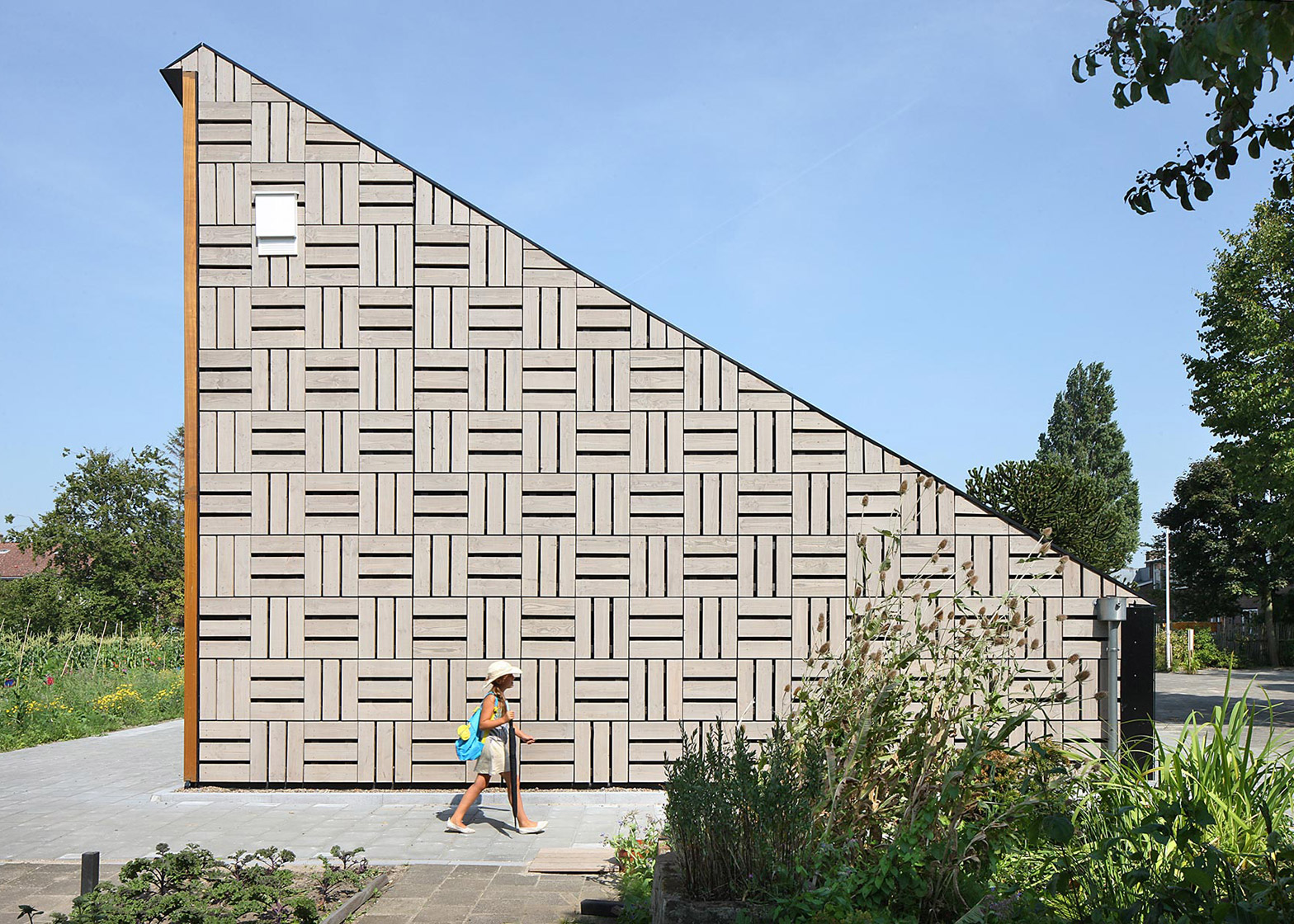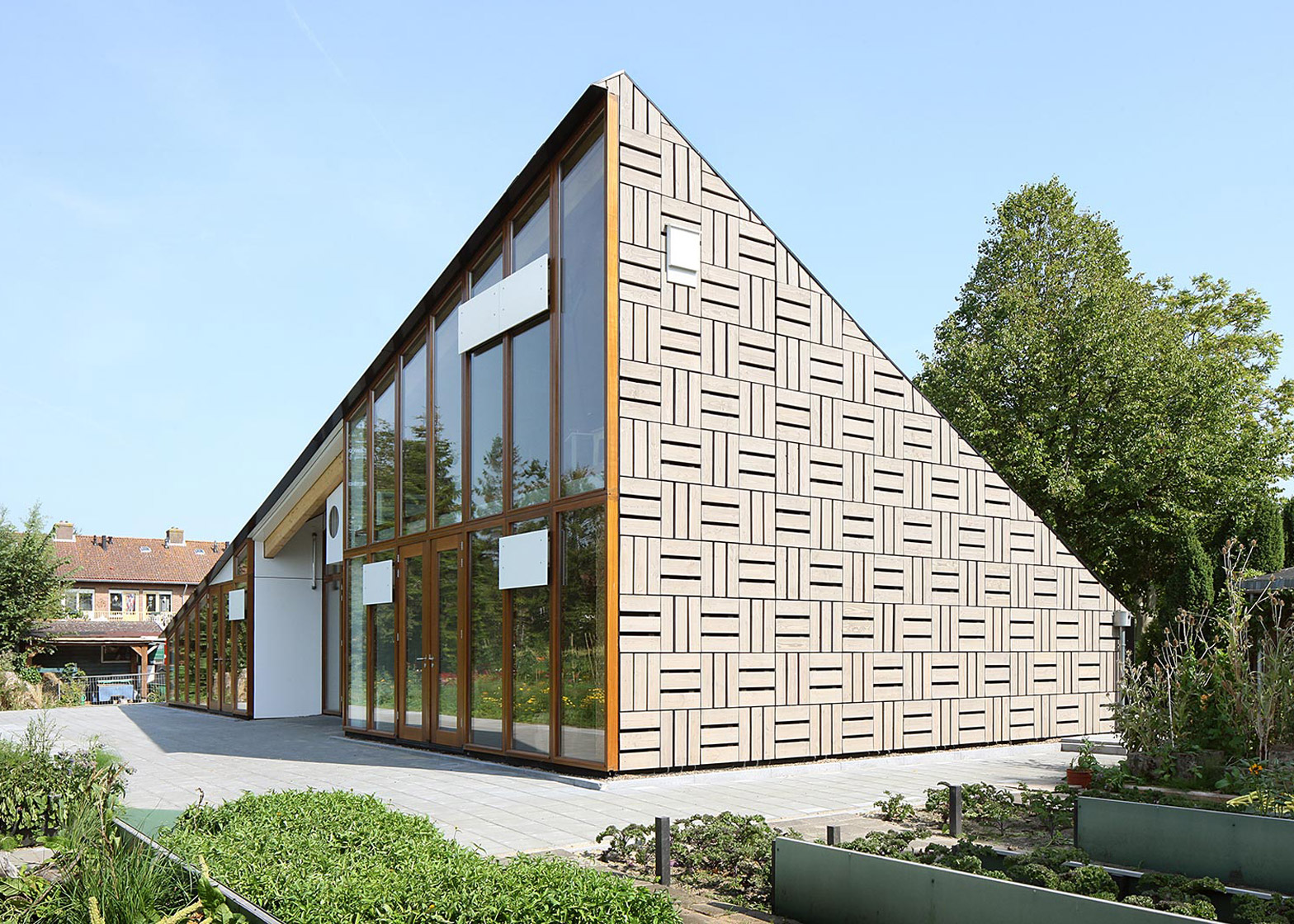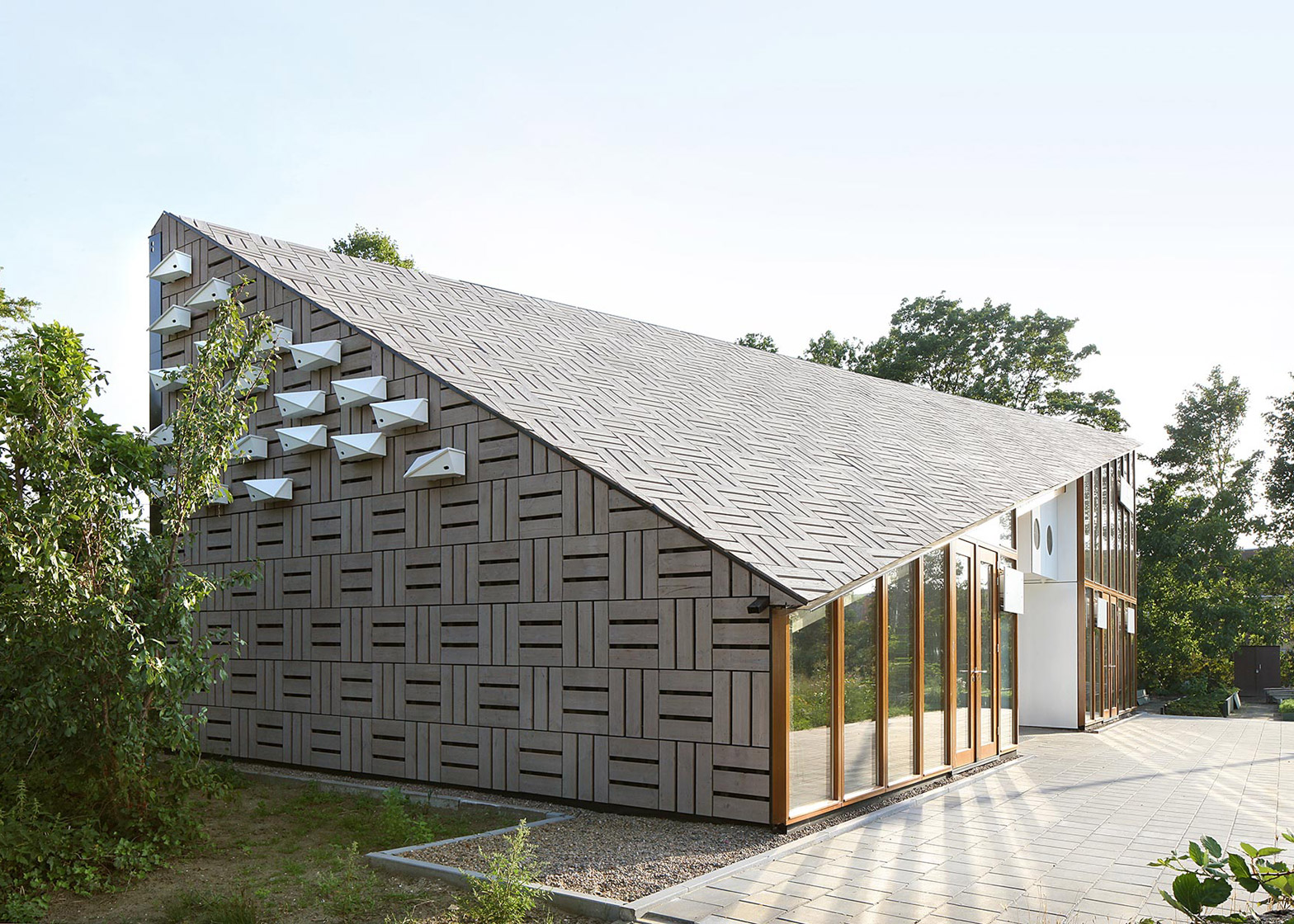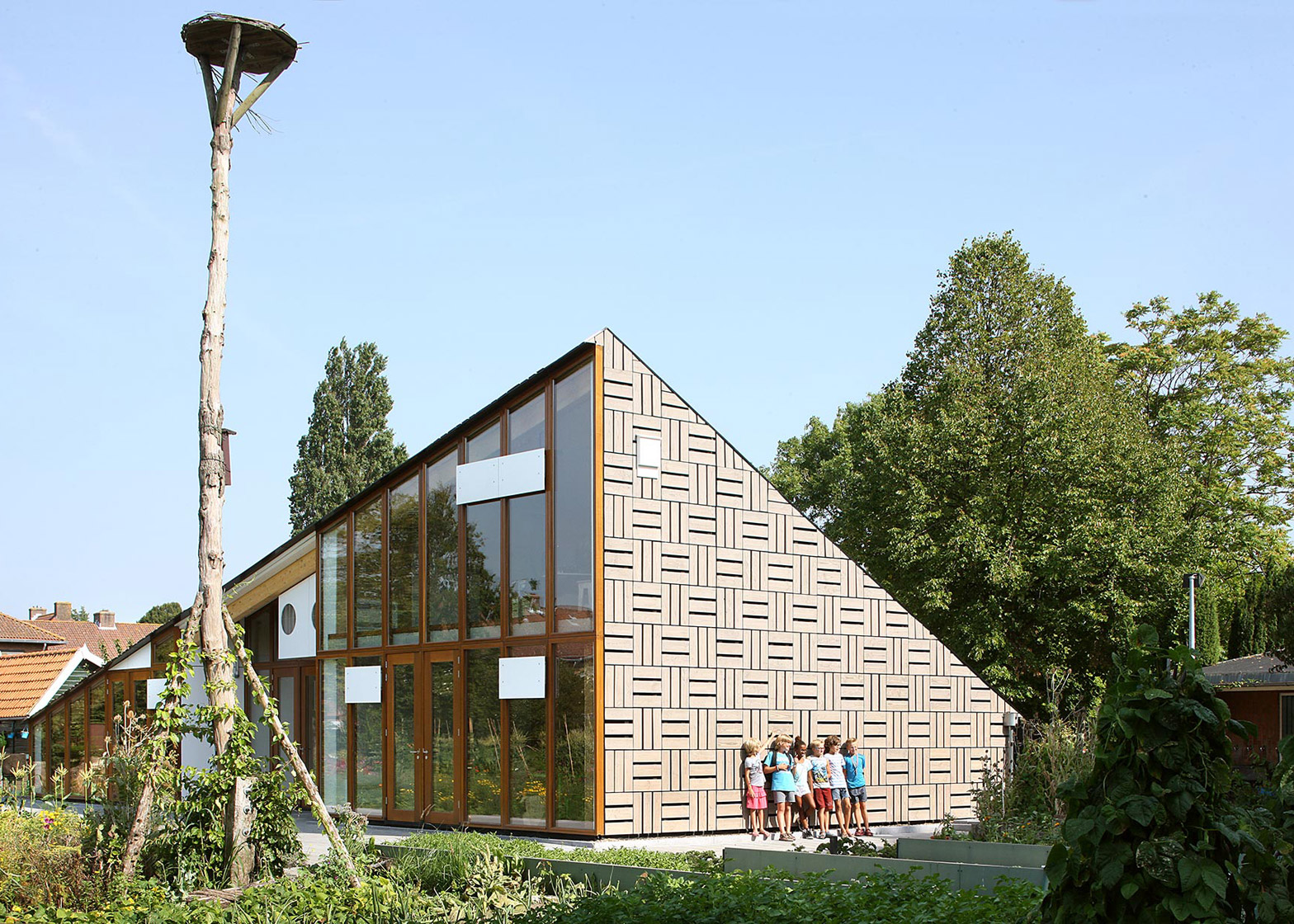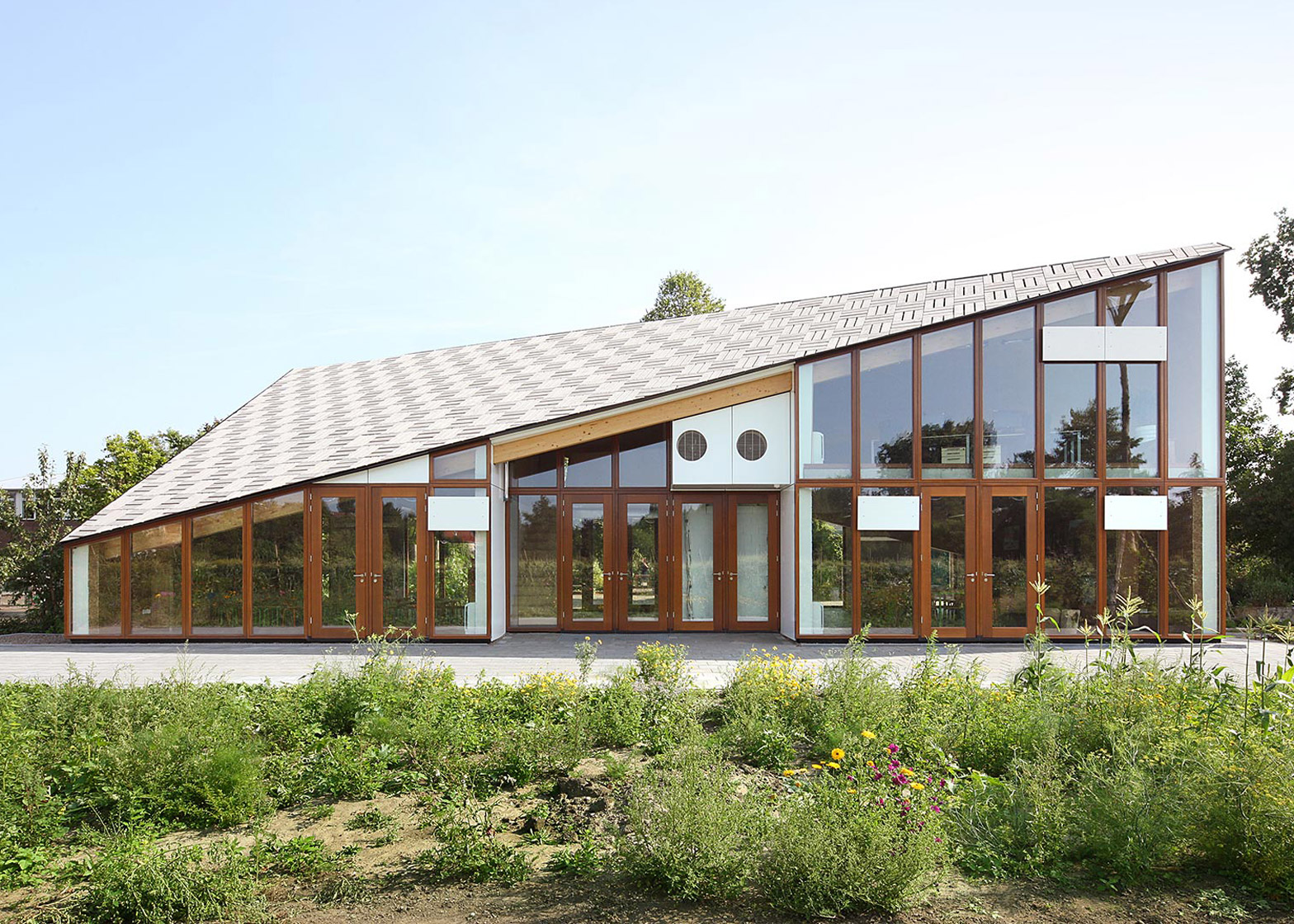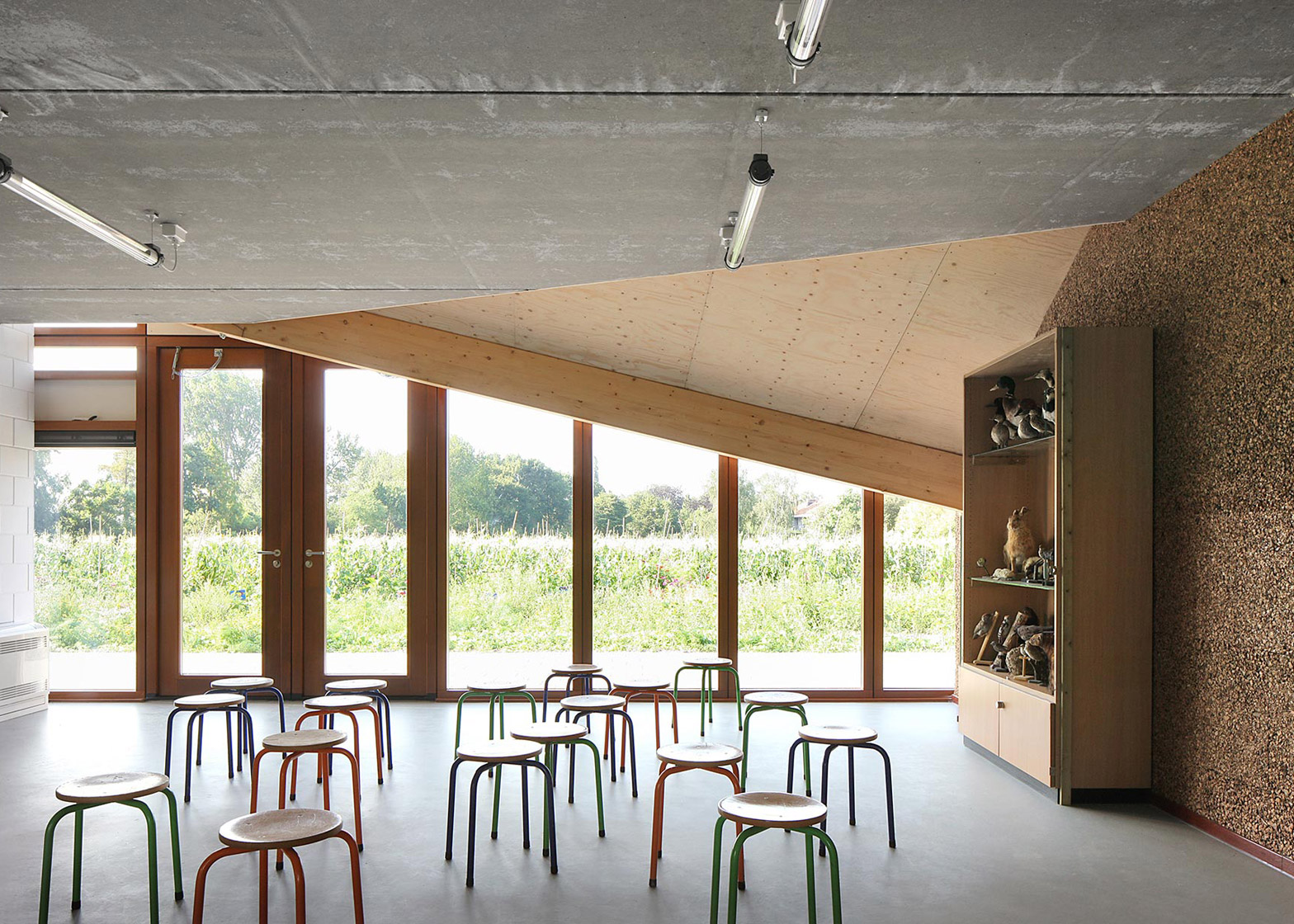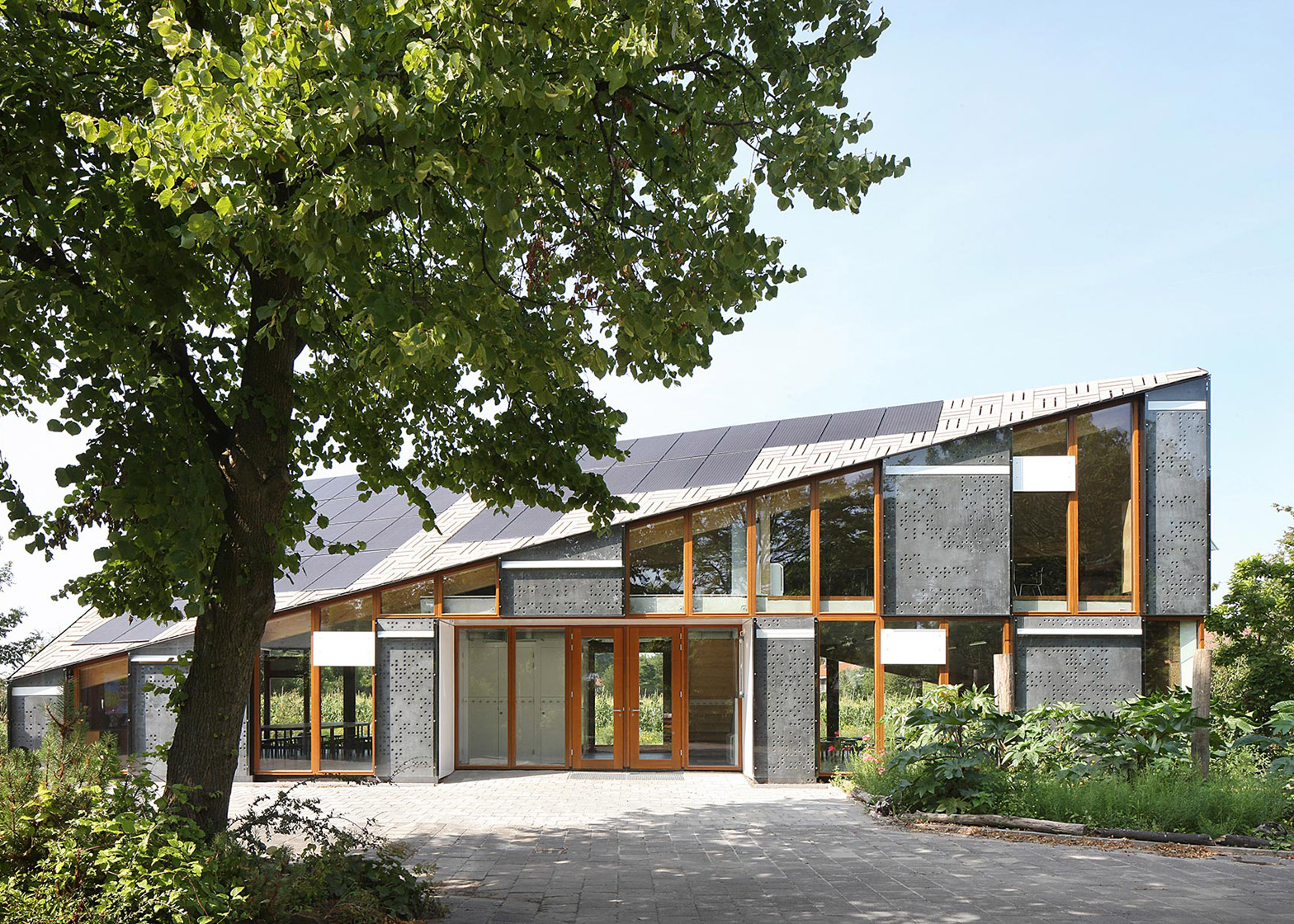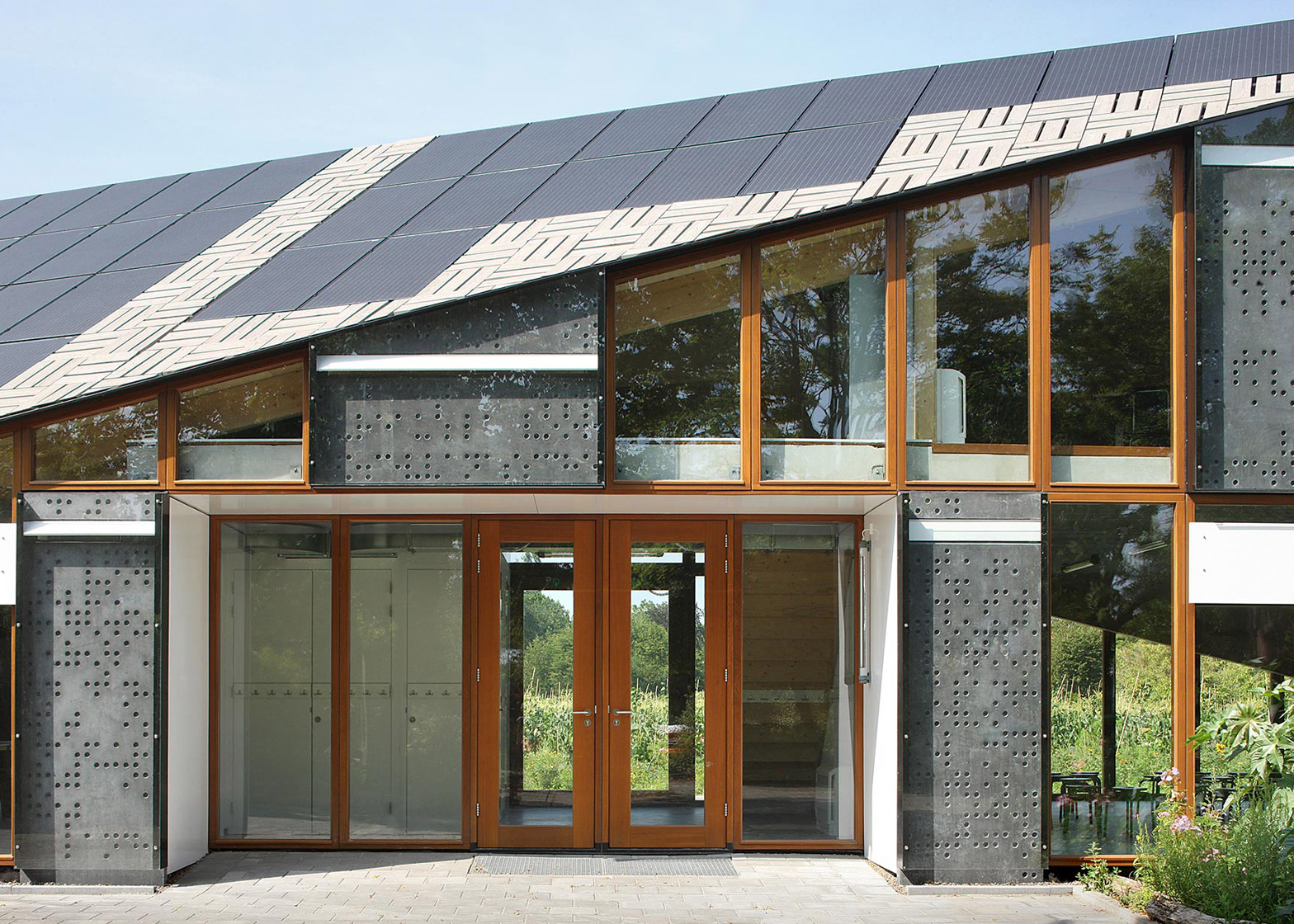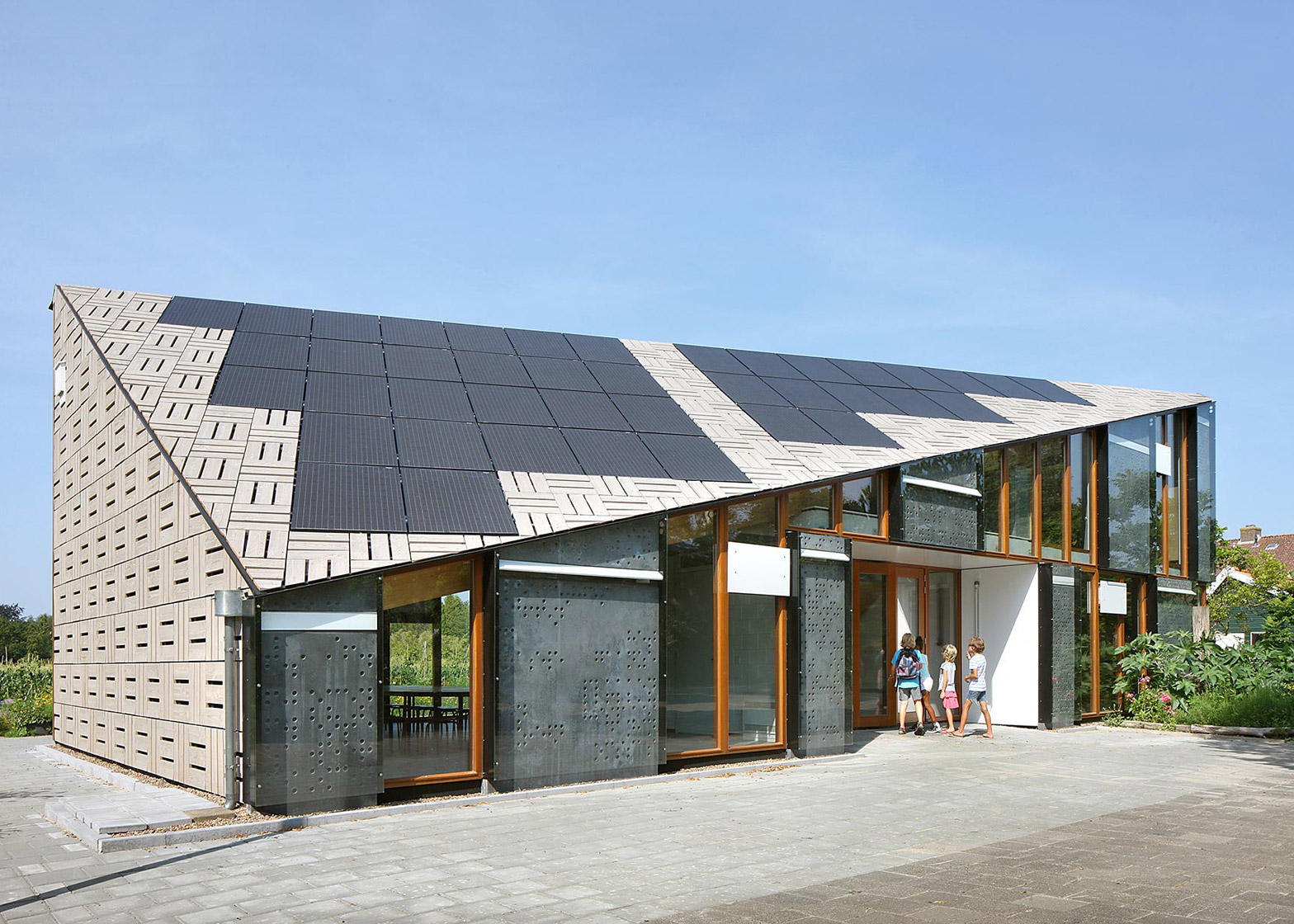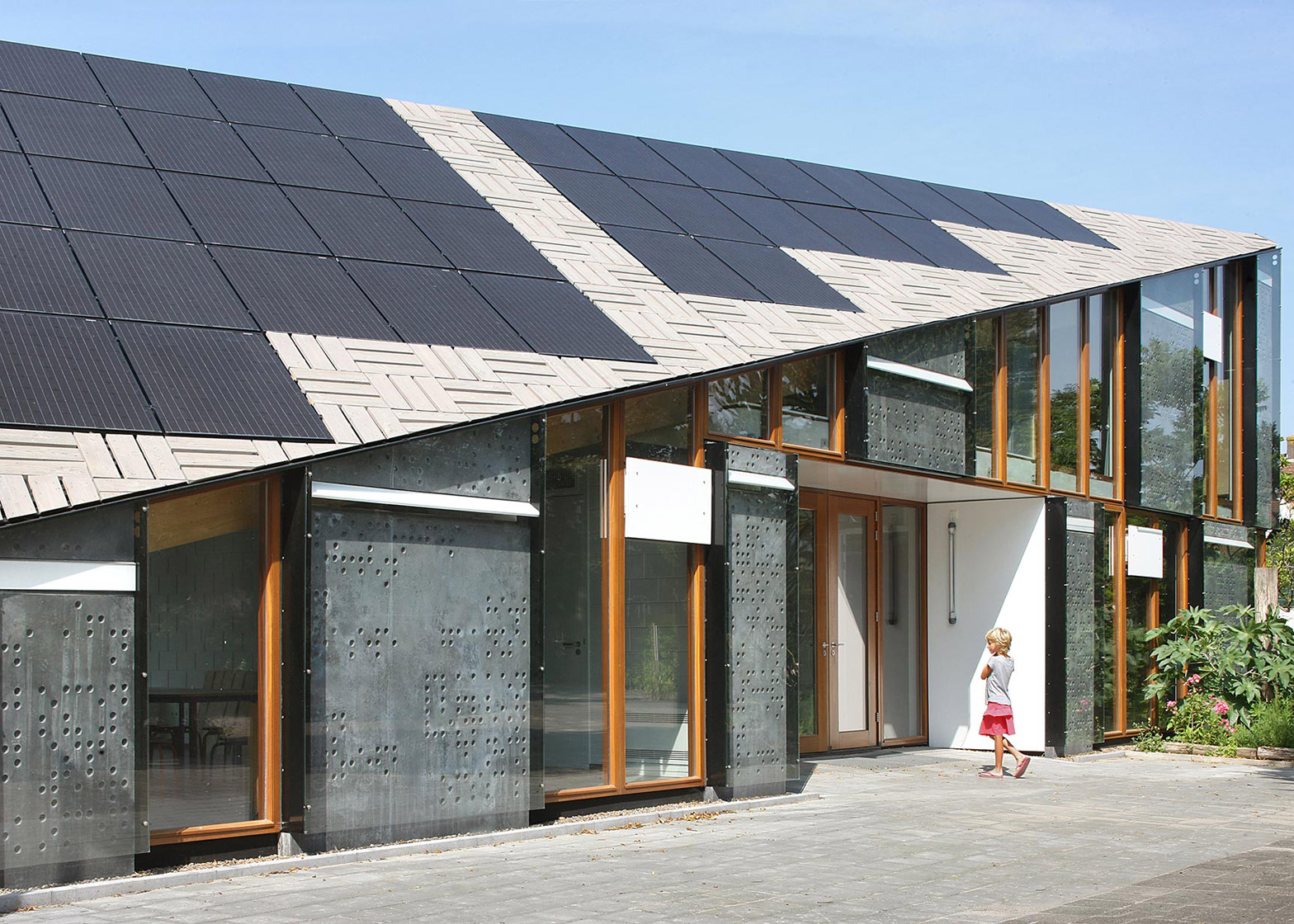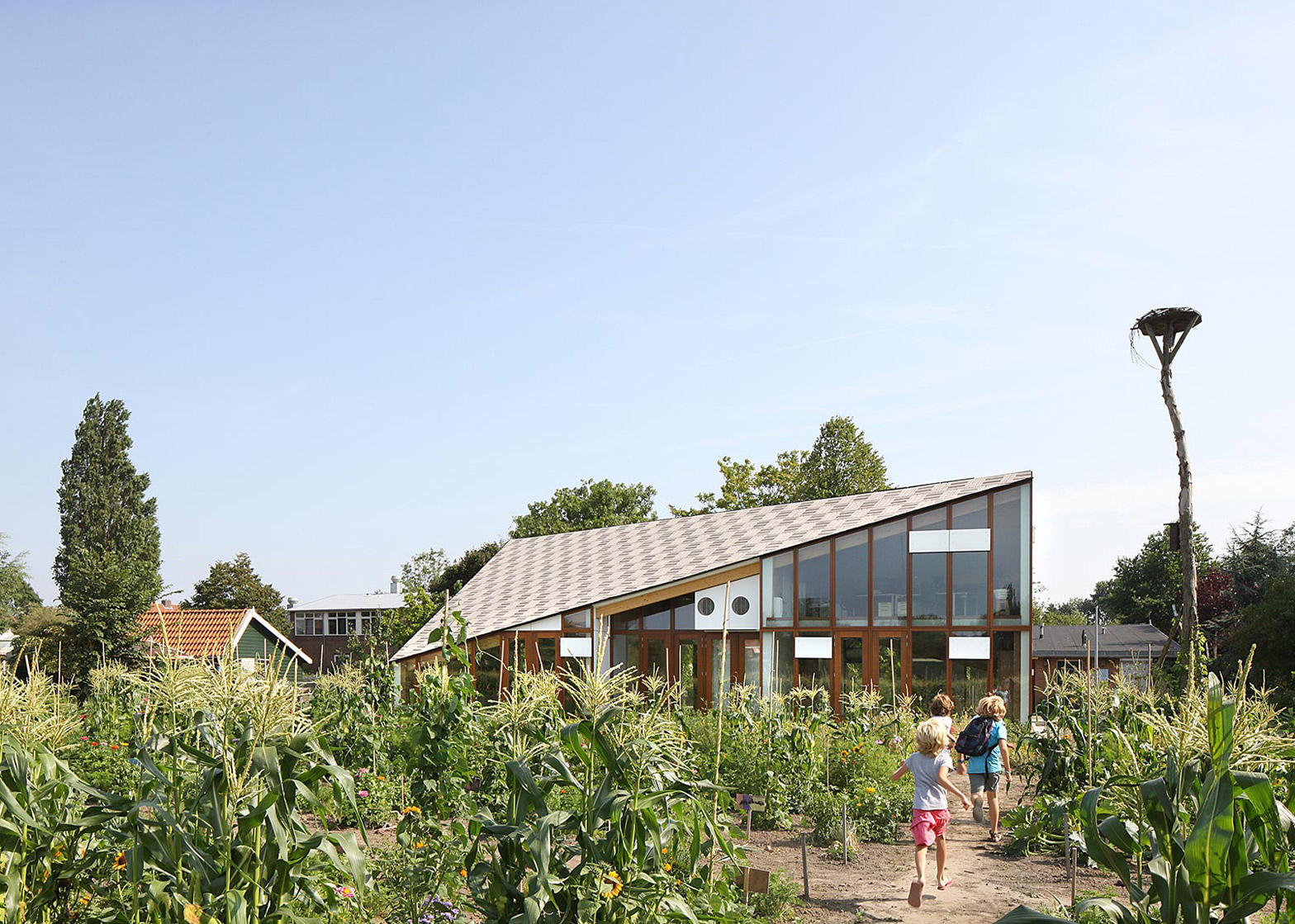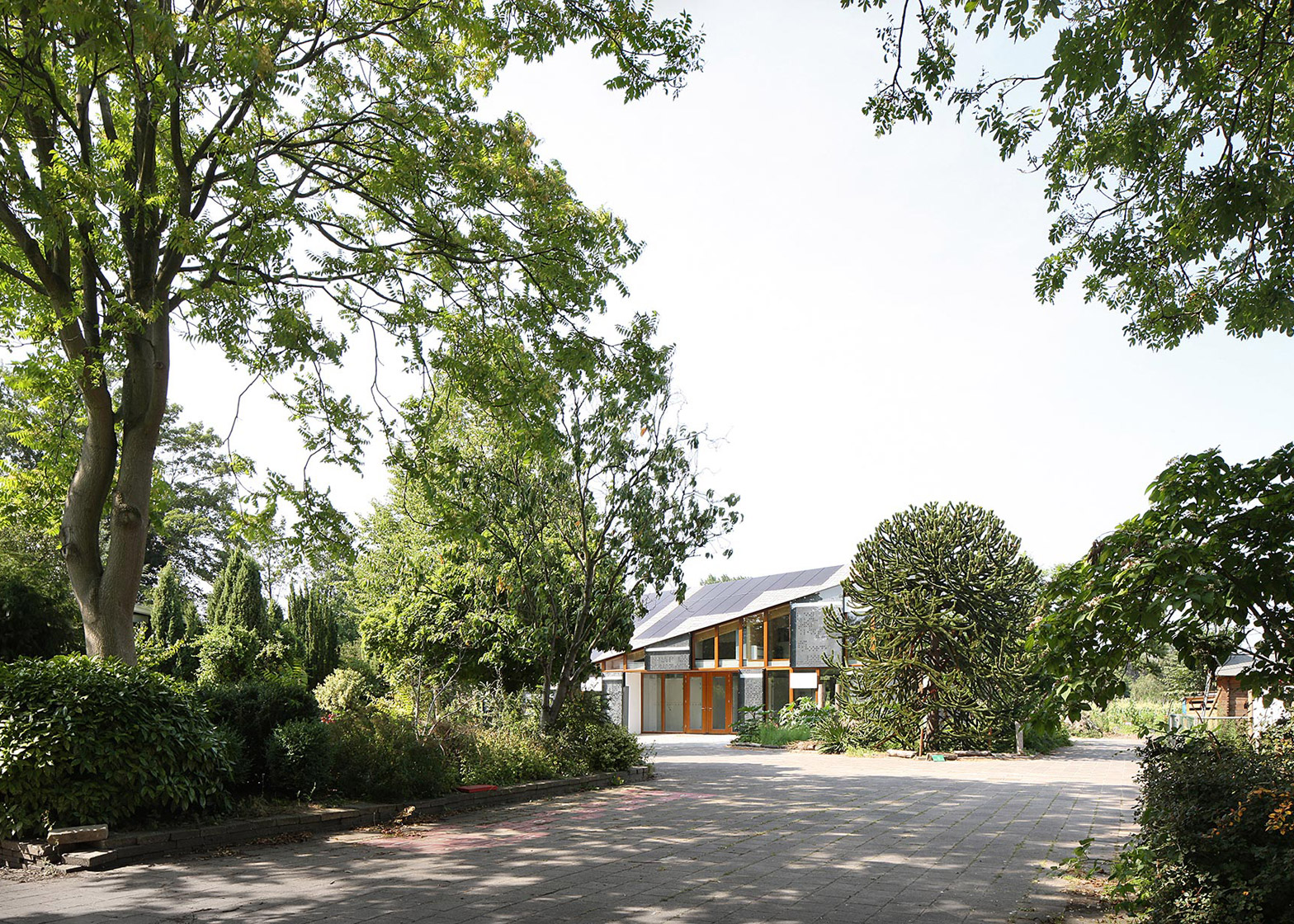Tessellating timber panels create graphic patterns on the exterior of this environmental education facility in Amsterdam by Bureau SLA, which also features a roof covered in solar panels (slideshow).
The Nature & Environment Learning Centre (NME) is part of a programme aimed at educating children in the Netherlands about the environment and sustainability.
Dutch studio Bureau SLA was asked to design the first purpose-built facility for the programme, and to ensure its values are expressed in the design.
Located in the gardens of a school in the Amsterdam Noord district, the building replaces two existing temporary structures. It contains dedicated classrooms, an office and a canteen.
Its form and materials were chosen to demonstrate the practical application of sustainable building techniques. The result is an energy-neutral structure.
"What makes the energy management of the NME interesting is that its sustainability is visible, tangible, and easily perceptible to even the most casual observer," said the architects in a statement.
The angular design is a response to the position of the plot and the need to orient the roof towards the sun to optimise the efficacy of the embedded photovoltaic panels.
By aligning the ridge of the roof along an east-west axis, the solar-collecting panels are pointed directly south. This also results in a roofline that slopes down to a level where even small children are able to see the panels.
The walls and the roof around the solar cells are clad with timber slats arranged in a tiled pattern. These slats conceal the bitumen weatherproofing beneath and create a surface that is flush with the solar panels.
Recessed entrances on either side of the building open into a lobby with classrooms of equal size on either side. Large windows and glazed doors offer views straight through to the gardens beyond.
A staircase ascends from near the entrance, leading up to a canteen on one side of the first floor and an office on the other.
The structure's north facade is almost entirely glazed, with metre-wide frames containing large panes of glass that ensure plentiful daylight reaches the interior. Operable panels distinguished by a white lacquered finish are the only interruptions to the glazed surface.
On the south-facing elevation, a passive heating and cooling system – known as a Trombe wall after its inventor Félix Trombe – has been applied.
The system comprises a series of concrete slabs set behind the glazing, which absorb sunlight and warm a pocket of air behind the slab and the window.
Vents inside the building can be opened to allow the warm air to circulate, or left closed to keep the hot air out on summer days.
"The Nature & Environment Learning Centre shows that Trombe walls not only work very well, but that they can also provide a detail that is both architecturally and aesthetically pleasing," added the project team.
A braille-like pattern of recesses was also added to increase the surface area of the slabs and offer a visual "anthology of Dutch nature poetry".
On the building's east wall, a collection of birdhouses offer accommodation for families of swifts and bats. The angular forms of the white boxes evoke the shape of the main building.
Bureau SLA is based in Amsterdam. Previous projects include a barn-like Buddhist meditation centre clad in corrugated steel, and the conversion of a 19th-century military building in to an art gallery featuring a white house-shaped volume inserted into the existing timber structure.

